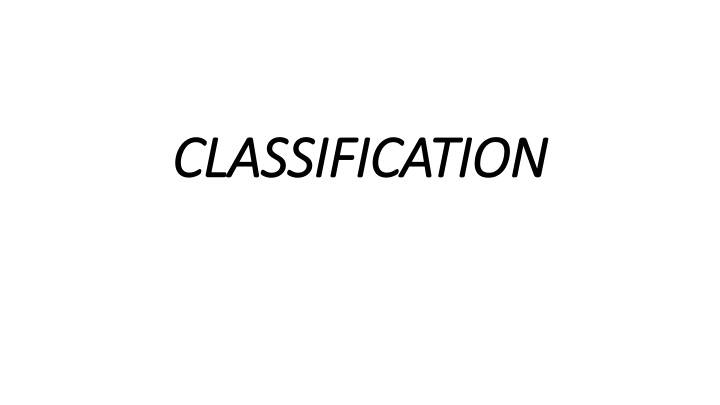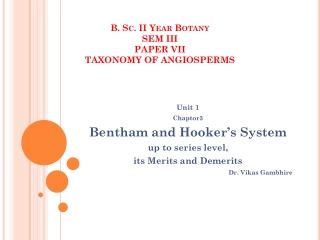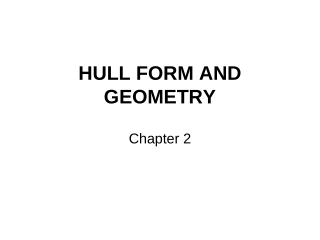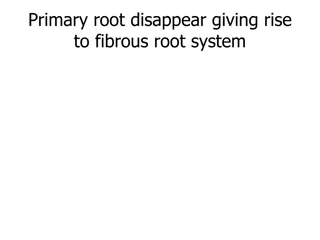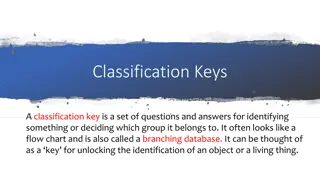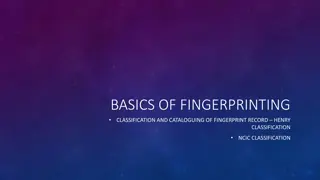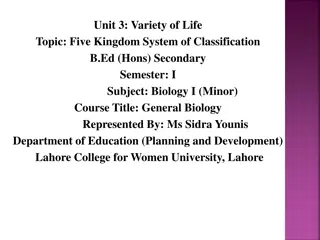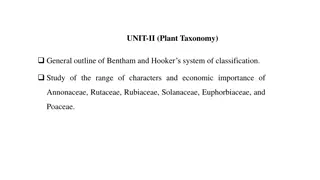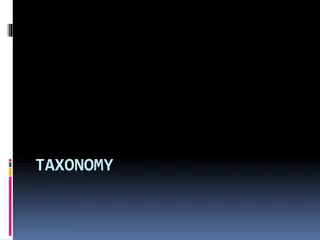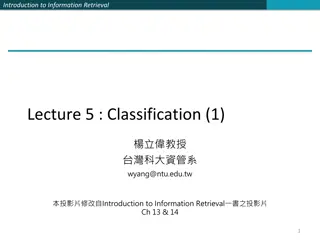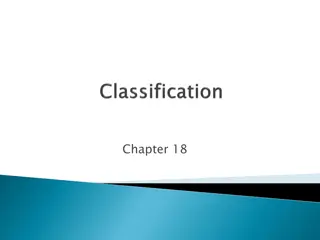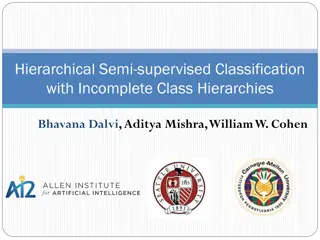CLASSIFICATION
Classification is the act of dividing items into groups or categories based on specific principles. This systematic approach allows for better organization and analysis of diverse materials. Learn about the importance of clear classification principles and how to create mutually exclusive categories. Explore examples of classification in everyday scenarios to enhance your understanding of this essential cognitive process.
Download Presentation

Please find below an Image/Link to download the presentation.
The content on the website is provided AS IS for your information and personal use only. It may not be sold, licensed, or shared on other websites without obtaining consent from the author.If you encounter any issues during the download, it is possible that the publisher has removed the file from their server.
You are allowed to download the files provided on this website for personal or commercial use, subject to the condition that they are used lawfully. All files are the property of their respective owners.
The content on the website is provided AS IS for your information and personal use only. It may not be sold, licensed, or shared on other websites without obtaining consent from the author.
E N D
Presentation Transcript
CLASSIFICATION CLASSIFICATION
The verb classify means to divide objects, people, or ideas into groups or categories . It is something we do every day. Classification is a logical way of thinking that enables us to separate a large number of items into categories. The result is a more manageable way to understand or analyze the material.
It is important to note that you always classify according to a principle. For example, consider the topic of boats. If you want to write an essay classifying boats, you have to state the subject (topic) you are describing (boats), the classification principle (e.g. how they move), and the categories (in this case: sailboats, powerboats, rowboats).
There is often more than one way to divide something into several categories. For example, you might classify clothing into three groups: -formal clothes, semiformal clothes, and casual clothes -indoor wear and outdoor wear Transportation could also be divided in several ways: -Local, national, international -Private, public -Land, air, sea
The important thing to remember when you classify is that the categories must be mutually exclusive. In other words, the categories cannot overlap. For example, you cannot classify clothing into formal clothes, casual clothes, and summer clothes because the categories overlap. Some summer clothes are formal and others are casual.
There can be any number of principles of classification available for a topic. To illustrate, consider the topic students. This topic could be classified according to: 1. How many credits the they have completed: first-year students, sophomores, juniors, seniors. 2. Age: Under 18, 18-25, 26 and over. 3. Level of intelligence: brilliant, intelligent, average, below average. 4. Style of dress: formal, semiformal, casual
Determining the Classification Principle Activity 1 The classification principle is understood, but not stated, in these three thesis statements. What is the classification principle? 1. There are two types of high schools in Turkey: public and private. a. Quality of instruction b. Qualification of the teachers c. Who pays for the school
2. Deep-sea fishing, shore fishing, and river fishing are the kinds of fishing most people enjoy. a. Size of fish you catch b. Where you do the fishing c. How much you like the activity 3. The four major food groups are: grains and nuts, fruit and vegetables, dairy products, and animal products. a. The freshness of the food b. The origin of the food c. The healthiness of the food
Structure Structure of of the the categories categories When you name the categories in the introduction, express them in parallel structure- that is, express them in the same part of speech. If you identify a category using a clause, then all of your categories should be identified using clauses: There are those who like movies, those who hate movies, and those who are indifferent to movies. (clauses) There are basically three types of bus drivers: friendly, indifferent, and unfriendly. (adjectives) The students in this class fit into the following categories: the high- achievers, the moderate achievers and the low achievers. (nouns) Most people respond in one of the three ways: eagerly, indifferently, or reluctantly. (adverbs)
Establishing Establishing the the principle principle of of classification classification We classify information using a principle of classification ( the common similarity that the objects in the group share). ACTIVITY: The topics below have been divided into several categories. Which category does not fit with the others? Decide what categories have in common, and find the principle of classification. 1. Topic: People (monolingual, bilingual, intelligent, multilingual) Principle: 2. Topic: Teachers (experienced, friendly, indifferent, hostile) Principle: 3. Topic: Drivers (taxi drivers, lorry drivers, careless drivers, bus drivers) Principle:
The language of classification 1. There are two three several kinds types classes sorts categories groups of There are three kinds of energy: nuclear, hydraulic, and solar.
2. We can divide classify group categorise sort put organise categories parts groups types kinds classes ________ into three : We can divide the students in this class into three groups: Asian, European, and South American.
3. _______ can be divided classified grouped categorised sorted organised three parts two groups four types two kinds two categories are into News articles can be divided into three categories: local, national, and international.
Writing Writing a a thesis thesis statement statement for for a a classification classification essay essay A thesis statement for a classification essay can be written in two ways: 1. By giving the number of categories Williams divides people into three categories: intelligent, average, and below average. 2. By giving the principle of classification Williams divides people into three categories according to / on the basis of / depending (up)on their level of intelligence: intelligent, average, and below average.
Transitions Transitions for for classification classification 1. Transitions to introduce categories The first group consists of those students who dress formally. The next group includes those who dress semiformally. The last category is made up of those who dress casually. And finally, there is the type that everyone dreads: the negative teacher. In addition to these two groups, there is another group: the permissive parents.
Transitions Transitions to to show showsimilarities similarities and and differences differences In a classification essay, it is important to clarify distinctions between categories; therefore, make use of the transitions that show similarities and differences. Unlike the positive teachers, the neutral teachers are not very agreeable. However, like the positive teacher, the neutral teacher allows for questions. Their classes tend to be more boring than the positive teachers classes because they allow less time for discussion. Neutral teachers, in contrast to positive teachers, don t show much interest to the problems of their students.
Transitions Transitions to to show category category show the the importance importance of a of a It is a good idea to indicate if an example or a category is more or less significant than the others. Of the three types of teachers, the negative teachers are the least agreeable. Fortunately, this group is in the minority.
Transitions Transitions to to introduce consequence consequence introduce examples examples and and In a classification essay, in order for your reader to clearly grasp how you are classifying, you need to give at least one example of each category. (for example, for instance, such as, is typical of, a good example of ) In addition, you will frequently want to use linking words of consequence (or result) to summarise how your examples relate to your classification principle. (therefore, for this reason, as a result/as a consequence, consequently )
ASSIGNMENT ASSIGNMENT Choose one of the topics below, and write a classification essay. Write 250-300 words Smartphone users University lecturers TV viewers in Turkey
